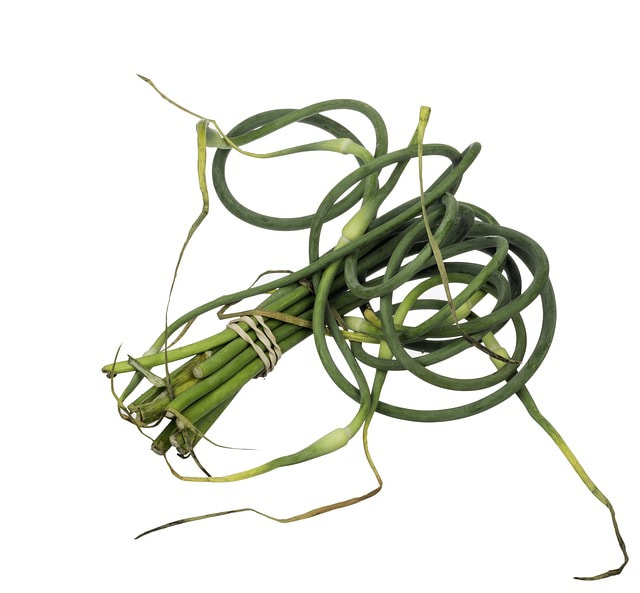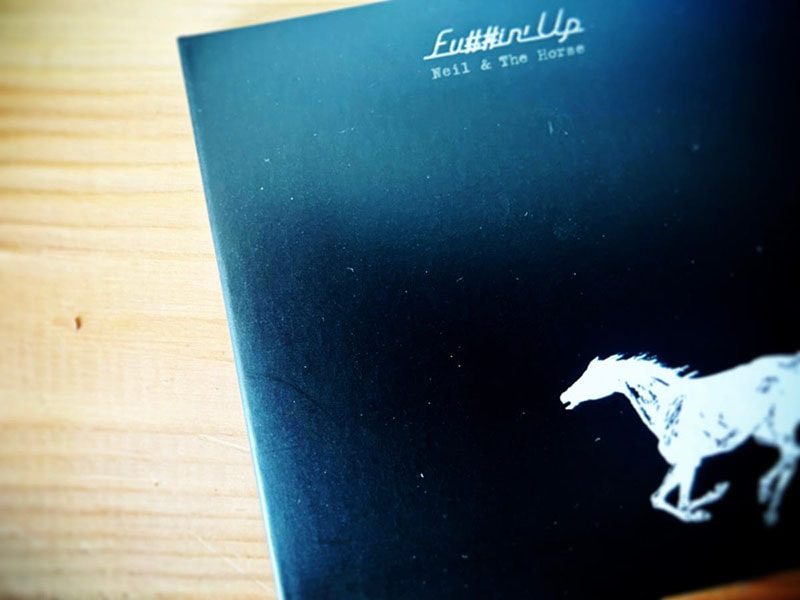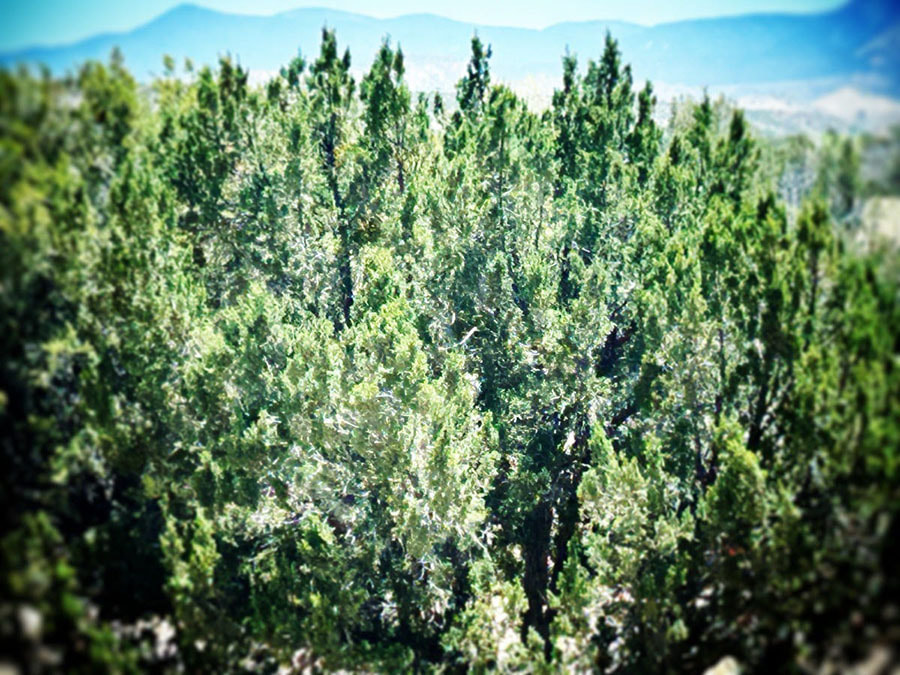 Image by WikimediaImages from Pixabay From our Garlic Master Bill Page, La Madera
Reprinted from May 2021 They are ready to cut. We cut almost all ours today. I usually leave 5% of them or so to grow out for the seed to use as snacks. I leave a few of the scapes on every year. They straighten out a little before harvest time, then I cut them off and let the flower head mature and open out. When the seeds are fully formed and dried up they come off the stalk easily and make nice little garlic snacks every day for a year. There is a little husk on them that I usually take off in my mouth. Many of us are convinced that cutting off the scapes is essential to growing the biggest heads of garlic Ten Things to Do With Garlic Scapes from Bon Appetit
0 Comments
Happy graduating, everybody who's graduationing Zach Hively Congratulations, graduates of the class of the current calendar year. This is a time of celebration, for it is the first time in living memory when no one in my immediate family is graduating from anything. But you are! And that’s great! I’m certain your families, out there in the audience, don’t mind pretending to be happy sitting through all these speeches by strangers with vague and questionable relevance to your class. Instead of spending their day watching all the Godfather movies in a row, your loved ones are enduring this multi-hour ceremony just so they can hear your name mispronounced for an approximate total of 1.1 seconds. Do not underestimate the dedication this takes. With you graduates all dressed the same, your families cannot even bide their time by commenting on your classmates’ poor taste in leggings, which really should seldom ever be worn as pants. Seriously. If you learned nothing else in this specific program or course of study, please, please recognize that you would be better off wearing chain mail made from beached kelp than leggings as pants. That look is nearly as unfortunate as jeans worn so low that they are technically denim socks, as the youth did in my day. Either this latter fashion blunder has blissfully gone out of style, or else I have just stopped leaving the house. I mean, who wouldn’t want graduate-level inspiration from this guy?
Leaving the house. That is what you graduates are doing, in the metaphorical sense. And maybe even the literal sense, if this isn’t a kindergarten graduation. A word of advice as you step into the big wide world: Actually, never mind. I was going to intone something Deep and Meaningful, something using a preschool-sized finger-paint handprint as an extended metaphor for how you will always continue to grow and learn, even though you’re leaving school precisely so you can stop growing and learning. It was going to sing such phrases as Next Chapter and Be True to Yourself. It was inspired. But I have sat through plenty of speeches given by folks who thought they were inspired. And all I remember about them is how bored I was. No one wants to be here; luckily, the person who invented graduation ceremonies also invented alphabetical order. That way, the Aarons get to skip out early, and entire Youkilis families can take a nap until at least the Willises. Or they would, if they could. But they can’t. I realize you graduates take naps for granted. Someday, as adults, you will have to attend graduation ceremonies in which you are not personally graduating. Then you will learn that the folding chairs and bleacher benches in these places are really uncomfortable. Unlike you, who have had lots of recent practice napping through social studies class, your families cannot fall asleep on a tile floor or a writing desk or an anthill. They are out of napping shape. Graduates, you must treat your naps with the rigor and respect of an Olympian. The swimming and running kind, not the curling kind. The ability to fall asleep anywhere, at any time, and to wake up reliably before dinner requires more dedication than you could ever imagine. Once you fall out of practice, once you dull your abilities, once you succumb to the pressures of the waking world ... it’s lights-out for naptime. Or should it be lights-on for naptime? I don’t know— and that question has kept me wide awake for hours, entire minutes, that I would have rather spent napping. But I got lazy with my naps. Scientists say I could have developed higher alertness, enhanced memory, improved performance, less stress, and other superpowers just by crashing out. Instead, I am nap-flabby. Take a long, hard look at me, graduates. I am what happens when you adopt a lax training regimen. So when you leave here today, by all means, celebrate. Go to dinner with your families, and then party with your friends. Sign yearbooks, hug each other, and swear you are going to stay in touch, even though, in reality, you will get really good at passing each other in the grocery store while pretending to examine the nutrition labels on boxed mac & cheese. Exhaust yourself, so that when you get started on your future, it begins with some killer zees. You’ll keep taking those naps if you want to really Be True to Yourself in the Next Chapters of your life. Let nothing stand between you, your pillow, and a healthy lifestyle. Got a commute? Squeeze one in during the bumper-to-bumper. Got religion? Snooze through the eyes-closed parts of the service. Got ambitions? Don’t chase them down half-dozed. Got family? Make sure that they never, ever graduate from anything, ever. If you made it this far, you must like something about my writing style. Lucky for you, this is actually an excerpt from my forthcoming book, Call Me Zach Hively Because That Is My Name. There’s loads more nonsense like this, if you want to stock up on gifts for next year’s graduating class. (Eat your heart out, Dr. Seuss.) By Sara Wright
I sit under the snowy crabapple as fragile flower petals drift one by one to the ground, covering my hair in white butterflies, soon to become the first mulch of the year. Our Lady is always nourishing new life… The hum of a thousand bees is deafening – bumblebees - glorious golden rotund bodies swarming from one tree to another with so many relatives – everyone seeking sweet nectar. The scent is beyond description - intoxicating – a poignant perfume lasting only a few days and keeping me rooted to my bench every single morning to soak in the sweetness under impossible heat. Heavily polluted air is thick and metallic but here I inhale a plethora of fragrances so intense they drown out poisoned air. One rose breasted grosbeak is hidden in the deep vermillion of the fruit tree that bears his name. No wonder he sings his heart out. A red eyed vireo’s musical trill provides striking counterpoint even at noon. Phoebes chirp as they gather feathery mosses for their nest above my door. I gather more and add strands of my hair depositing both gifts on the ground in front of their flowering crab situated just outside my door. In moments both treasures are gone, swooped away by nesting parents The Flower Moon has just passed and many spring wildflowers have come to crown the Queen of the May who is dressed in her glorious cherry, apple, pear, crabapple finery. Swaying wild grasses hold spikes of lavender, blue, and purple ajuga, periwinkled mrytle is festooned with liny gold bees. Violets of every conceivable shade cover the ground along with astonishing neon yellow dandelions. Solomons seal arc so gracefully bending pendulous bells to the ground. Chartreuse and lime paint a ground cover named charlie, a sinuous serpent creeper that slithers across the uncut grass seemingly choosing every direction at once. No mow sparks endless creativity. I am poised, a lady in waiting for relief. And then they come! The Thunders. Rumbling sky gods split and sever dead air in hope. Many fruit trees have weeping leaves that droop under a brutal noonday sun. Cracked brown earth opens her slumbering eyes. Earthworms driven deep in this intolerable heat, hide among delicate mycelial threads who are funneling nitrogen potassium, water, minerals and other nutrients to those that need them… Tree roots are singing songs to this tubular informational highway lightly hidden underground. Ah, and so it begins, the deluge, sheets of silver hitting the ground in a fury… the sound of ionized water slapping roof and tree sooths my aching head still pounding from metallic air and merciless heat. I become this storm all senses on fire with longing. Presence. Rain, a blessing for all, even the flowers bend their heads in prayer. During breaks in the torrent hummingbirds zoom in to the feeder. One chickadee appears from a tangle of fruit tree branches, grabs a seed and disappears Another follows suit. After the Thunder gods move on a female rain begins (as Indigenous folks say) falling in time with fluttering petals, crimson, rose, burgundy, pale pink, mauve and pearl. How gently all spiral earthward. Too soon the storm is over, but the Mayflower Queen has reigned in flowery splendor for a week that ends in a nourishing watery reprieve. She will soon retire for another year after the last blushing pink crabapples fade ending the Celebration of the Trees in this hollow on a waning moon. And leaving the earth to celebrate more stars, spiked jewels, and impossible fragrances for another month The solstice fire may burn Finding an alternative place to park Middle Rio Grande water options with El Vado Dam out of service5/28/2024 Republished with Permission from John Fleck
(Note: Leave notes in comments) Two key takeaways from Monday’s (May 13, 2024) Middle Rio Grande Conservancy District board meeting:
El Vado, built in the 1930s on the Rio Chama, has been out of service since 2022 for rehabilitation work by the US Bureau of Reclamation’s dam safety program. Challenges in fixing it have sent Reclamation’s engineering team back to the drawing boards. Work was supposed to be done by 2025. It’s now clear that the dam will be out of service for the foreseeable future. Without the ability to store some of each year’s spring runoff for use in late summer and fall, the Rio Grande through Albuquerque is at the mercy of summer rains, without which it will dwindle to near nothing every year unless or until El Vado is fixed or we sort out alternative storage arrangements. More on this part – the status of trying to fix El Vado – in a separate post to come later (once I write it I’ll add a link here), because the more important bits at Monday’s meeting involved the first cagey public discussions about what we will do in the meantime. (Inkstain is reader supported.) EXPLORING WATER STORAGE ALTERNATIVES FOR THE MIDDLE RIO GRANDEThe always quotable Socorro farmer and MRGCD board member Glen Duggins offered a simple plea: “Just give us somewhere to park our water.” Much of Monday’s discussion – sometimes explicit, sometimes in coded language – focused on this question. If you look at the monthly reservoir storage graphic from Reclamation printed as a handout for Monday’s meeting (printed as a handout for every meeting), you’ll see there are two other reservoirs flanking El Vado upstream and downstream, and they have enough empty space in them to make up for most, if not all, of El Vado’s now unusable ~180,000 acre feet of capacity.
But the details of using them for this new purpose, storing Middle Valley irrigation and environmental water, which is different than the purposes for which they were built, are staggeringly tricky. Abiquiu Abiquiu Reservoir, built in the 1960s by the U.S. Army Corps of Engineers on the Rio Chama as part of a massive federally funded project to protect the Middle Rio Grande Valley from flooding, is huge. In 1981, Congress authorized a change in use to allow imported San Juan-Chama water to be stored in Abiquiu – up to 200,000 acre feet. (It requires an act of Congress.) Subsequent to that, the Albuquerque Bernalillo County Water Utility Authority got a storage permit from the New Mexico Office of the State Engineer (Storage requires a state permit, I hope you can see what I’m doing with the parentheticals.) to store its SJC water in Abiquiu. Then in 2020 another act of Congress did something I’m a bit confused about that allowed native water storage, not just San Juan-Chama water, and maybe more than the 200,000 acre feet, I think (Note: Another act of Congress required.) And then the Army Corps of Engineers had to rewrite its water operations manual, which nearly four years later is just now being completed. (It requires not only an act of Congress to change the purpose of use at Abiquiu, but also a lengthy Corps process to rewrite its rules.) My Utton Center colleagues are far smarter than I about these institutional nuances – Utton has long worked on the legal plumbing – but I wasn’t about to wake them up at 6 in the morning, so you’re stuck with me. So yes, there is space in Abiquiu for us to park our water. But the rules tangle is of Gordian proportions. Heron Upstream, Heron Reservoir sits on a tributary to the Chama, built in the 1970s to store water imported beneath the continental divide from three Colorado River headwaters streams. It seems ill-suited for storing Rio Grande water. It currently holds ~100,000 acre feet of imported San Juan-Chama project water, with room for another ~300,000 acre feet. (Note bene: I’m rounding all the numbers off here to one or a few significant digits.) The trick here is to hold the San Juan-Chama water in Heron and then do a series of carryover accounting and maybe native water swaps that I can’t begin to understand, let alone explain, in order to kinda sorta use Heron as well. THE NEGOTIATIONSOne of the reasons the discussions about all of this at yesterday’s board meeting were kinda vague is that the three parties crucial to cutting the Gordian tangle – MRGCD, the Bureau of Reclamation, and the Albuquerque Bernalillo County Water Utility Authority – are in negotiations about what sort of parenthetical agreements might be needed to make it all work. They need space to sort out thorny incentive problems – the interests of the municipal water utility to protect and manage its own municipal supply will be key. In this regard alone, it my be in the water utility’s best interests to help. Low late summer river flows, which are inevitable without storage, force the utility to switch to groundwater pumping to get water to my tap. As a result, the aquifer recovery, of which we are rightly proud in Albuquerque, has stalled. Also key will be the broader community interests of flowing ditches and a flowing river, which while not directly related to ABCWUA’s water supply nevertheless may be things the water utility’s board members – city councilors and county commissioners – care about. The typically blunt Duggins was unusually cryptic at Monday’s meeting, but I infer this is what he was talking about when he said: “We’re neighbors. I don’t understand why it would take a year or two to get papers signed.” By Zach Hively Sometimes, I like to offer a glimpse into the inner workings of a poem, or provide a bit of story around the margins. This week, though, the poem is here. Just like the flowers are, right now, in northern New Mexico. And beauty does not always emerge gently. Here you are: Desert Flowers
It's a good year for wildflowers but not for metaphors about gentle rains and deep roots or patient seeds biding their time. These flowers do not unfurl, groveling and grateful, where they may. They claw without claws, scrabble without toes, fight tooth and nail without-- you know-- just to explode themselves, bleed swagger with every violent scrap of hard- claimed, luck- granted cloud. They burn. They burn, and no one asks them "why here?" because where the hell else and desert flowers don't need to talk back, don't need to punch your throat or break your heart to dig their roots, bide their time. Thank you for reading Zach Hively and Other Mishaps. This post is public so feel free to share it with your friends. Share Zach’s Substack is free. The free stuff today will remain free tomorrow. Someday, he might offer additional stuff. Zach+, as it were. You can tell Zach that you value his work by pledging a future paid subscription to additional stuff. You won't be charged unless he enables payments, and he’ll give a heads-up beforehand. Pledge your support By Sara Wright
Republished from May 2018 For the last three nights I have been awakened by a bird singing at around 3AM. The first and second nights I heard three short cheeps and a strange buzzing call. These calls were repeated a number of times. Last night the bird that I heard made three soft calls a number of times. No buzzing. Mystified by the night song occurring just outside my window I finally did a bit of research on the sounds of birds made by the nightjar family because, although these calls were different, I am familiar with the species in general – especially the whippoorwill. After listening to bird recordings I was sure the buzzing sound was part of the mating dance of the male whose wings made the sound. The common nighthawk (Chordeiles minor) is a medium-sized crepuscular/nocturnal bird, part of the nightjar family. Typically dark grey, black and brown, these birds display cryptic coloration and are intricately patterned. This bird is almost impossible to spot during the day. On a moonlit night the nightjars that I have seen fly erratically. The most remarkable feature of this insectivore is its small beak that seems a bit at odds with its full rounded and somewhat squat body. The common nighthawk does not travel frequently on the ground, instead preferring to perch horizontally, parallel to branches, on posts, on the ground or on a roof. It has very short legs! There is apparently some variability in territorial size. I have never seen more than one pair in an area at once. The most conspicuous vocalization is the nasal high pitched call most frequently heard during crepuscular flight. Peak vocalizations are reported 30 to 45 minutes after sunset according to most sources. No source mentioned 3 AM calls! In defense of their nests, the females make a rasping sound, and males clap their wings together. Males will also perform dives against fledglings, females and intruders such as humans or raccoons. Frequent flyers, the long-winged common nighthawk hunts on the wing for extended periods at high altitudes or in open areas. Flying insects are its preferred food source. The hunt ends shortly after dusk turns to night, and resumes before dawn. Needless to say I have been on alert hoping to see a nighthawk in flight. For me the easiest way to identify them is by their size – they are medium sized birds (about 8 inches in length) and their v shaped wings. Vision is presumed to be the main detection sense. The average flight speed of common nighthawks is about 15 miles an hour. The nighthawk breeds during the period of mid-March to early October. It most commonly has only one clutch per season. The bird is assumed to breed every year and is monogamous. Courting and mate selection occur partially in flight. The male dives and booms in an effort to garner female attention; the female may be in flight herself or stationary on the ground. The three calls I heard were located just outside my window. Females choose the nest site and are the primary incubators of two eggs for about 18 days. The female will leave the nest unattended during the evening in order to feed. The male will roost in a neighboring tree; he guards the nest by diving, hissing, wing-beating or booming at the site, and feeds his mate while she sits on the eggs. Later he helps feed his chicks. In the face of predation, common nighthawks do not abandon the nest easily; instead they likely rely on their cryptic coloration to camouflage themselves. In a month the fledglings will be independent. Because of their nesting habits these birds are easy prey for raccoons who covet their eggs. Dogs, coyotes, owls and foxes are other predators. During migration, common nighthawks may travel 2,500 – 4500 thousand miles, migrating by day or night in loose flocks (that could number in the thousands) between breeding grounds throughout the US and the birds’ wintering range in South America. Their populations are in decline for the usual reasons – loss of habitat, pesticides etc. During warm summer nights I watch them fly by my porch after insects, and have never tired of the sight. In which I am left stranded By Zach Hively Are you in northern New Mexico? Come say hi this weekend! I’ll be set up with my publisher, Casa Urraca Press, in the artists’ mercado at the El Rito Studio Tour. I am my own man. You can’t pin me down to any one taste, or any single allegiance. Like Neil Young said, “I don’t sing for nobody.” Because he is always right and I agree with everything he does, I believe in staying true to myself and only myself. One of the things I do to stay true to myself is to purchase every new Neil Young album, which I’ve done since 1999 or so, when you could get them at a magical place called Hastings. I listen to them the whole way through, in my own uninterruptible sanctum, liner notes in hand. These rituals used to happen with CD releases, though for the last ten or fifteen years I have adapted, like any good American does, to the latest cutting-edge technology for most new album drops. Neil Young puts out enough new music that the modern large-format liner notes that come with these newfangled vinyl records are probably the main reason I still don’t need glasses. For this latest record with Crazy Horse, called Fu##in’ Up, I was feeling nostalgic for the CD format. Not least of all because it is cheaper, while still provoking a certain tactile satisfaction I have yet to glean from old-school streaming. I sliced open the cellophane, popped a beer, and slid the still-as-yet-unsmudged CD into my-- —into my-- —into nothing, because I no longer own a CD player. That’s okay. An impromptu road cruise also affords a superlative first-listen experience. I jumped into my car and fed that now-slightly-smudged CD into my-- —into my-- —into my realization that CD players are not, and have not been, standard automotive features since sometime in one of the Obama administrations. What a world we live in. CDs (the investment ones) are sitting at 5% interest rates, which incidentally is probably the current-day percentage of households with functioning CD players. Now, I hardly live a life of American excess. I have only two vehicles, for instance, and the one without Bluetooth capabilities plays cassettes, but only in one direction these days.
Yet technology has left me behind in even this most fundamental way, if neither my car, nor my other car, nor my computer, nor my other computer, nor my stereo, nor my alarm clock, nor my telephone, nor I, with the world’s knowledge at my fingertips, can play a single CD, once heralded as both a durable and a portable audio medium. But I, as my own man, refuse to change my ways just because technology doesn’t support them anymore. Besides, it’s nothing a quick trip to Radio Shack can’t fix. Thank you for reading Zach Hively and Other Mishaps. This post is public so feel free to share it. Share
OLNEY, ILLINOIS - Nestled in the heart of the Midwest, the city of Olney, Illinois, is known for its historic charm, friendly community, and a unique ecological marvel - its population of white squirrels.
These snowy-furred creatures have become a beloved symbol of the city and hold a special significance for residents, visitors, and wildlife enthusiasts alike. Unlike their commonly seen gray or brown counterparts, white squirrels are a rarity, making Olney's abundant population all the more astonishing. The white squirrels of Olney are not albinos, as many initially presume. While they sport a coat of pure white fur, their eyes are not red but instead hold a deep, dark hue. This distinguishes them from true albinos in the squirrel world, making them a unique sight to behold. The story of how these distinctive creatures came to call Olney their home is shrouded in mystery, with various local legends offering differing accounts. Some say they were brought to Olney as a novelty in the late 19th century, while others believe they were a natural mutation that thrived in the town's welcoming habitat. Regardless of their origins, the city of Olney has embraced these white squirrels with open arms, implementing ordinances to protect them and promoting their presence as a local attraction. The city even conducts an annual squirrel count to monitor the population and ensure their continued survival. Today, Olney is officially recognized as the "White Squirrel Capital of the World," a title that the community wears with pride. The city park offers an ideal location to spot these fascinating creatures, and visitors are encouraged to partake in "squirrel tourism," an opportunity to learn about and appreciate the unique wildlife that calls Olney home. The white squirrels have even influenced local culture and art, with numerous businesses, events, and art installations around the town featuring the beloved creature. From the annual White Squirrel Festival to the paintings and sculptures that adorn the city, the influence of the white squirrel is as woven into the fabric of Olney as its historic buildings and friendly residents. In conclusion, the white squirrels of Olney, Illinois, are a unique treasure, embodying the charm and uniqueness of the town. They serve as a testament to the city's commitment to preserve and cherish its unique ecology, inviting visitors from across the country to witness a true natural wonder. So, if you ever find yourself in the Midwest, make sure to pay a visit to Olney, the white squirrel capital of the world. By: [Your Name]
If you're paying attention you might have noticed how weirdly written that article is. Especially the end where it says: By: [Your Name]
That's because I didn't write it, AI did, specifically, ChatBox AI. That particular app uses ChatGPT, a common AI program used all over. I entered a basic request to write about the white squirrels, particularly from Olney Illinois. White squirrels are fairly rare, found in only a few places, and one place, Olney, is quite near where my cousins live. My brother and I stopped down there for a quick visit and stayed at the Best Western in Olney, which is way better than the one in Flora. The squirrel was a lot of fun to see, and Olney was a charming, small Illinois town with friendly people and a great coffee shop. The AI article is technically accurate, if not a bit embellished. By Jessica Rath Well, not really, but close. You may recognize Rick Hilsabeck as an oil painter who participates in the Abiquiú Studio Tour, but did you know that he also was a highly successful professional singer, dancer and actor on the Broadway Stage? He and his wife Sarah Pfisterer toured for many years in the first national tour of The Phantom of the Opera by Andrew Lloyd Webber, with Rick in the role of the Phantom and Sarah as Christine. Other Broadway shows they starred in were Billy Elliot, Chitty Chitty Bang Bang, Show Boat, Phantom of the Opera, and many more. How does one end up in sleepy and isolated Abiquiú, after being used to much applause from national and international stages? Abiquiú’s artist community will readily understand Rick’s motivations; after all, he has been a painter all his life and is fascinated by the light and the colors here. But I was curious to find out what else inspired Sarah and Rick to move to New Mexico, and they kindly agreed to an interview. Both Sarah and Rick grew up in the Midwest. Rick is from Chicago, and even as a young boy he loved to paint. He’d regularly visit the Chicago Art Institute where he particularly enjoyed Impressionist art and color. In high school he caught the theater and music bug, as he told me, and singing, dancing, and performing took precedence – but he still always painted as well. “We spent a lot of time in Boston, Chicago, and in the New York City area. Our careers were spent working on the Broadway stage and in New York CIty. We also traveled all over the place”, Rick explained. “Several years ago, I took a 10-day painting trip with my teacher to Ghost Ranch, which made me fall in love with Northern New Mexico”, he continued. He decided that some day they would return. They raised their two daughters in Connecticut, and when the girls had graduated from high school and were ready for college, Sarah and Rick could realize their plan. “We've always loved Abiquiu. But we thought it'd be difficult to find something there. We looked for a long time …” “We were looking at the Santa Fe region”, Sarah continued, “and we were almost ready to throw in the towel. We gave ourselves another two weeks. And that night I was looking through the listings, and this house came on the market, and that’s how we ended up here!” Tell me a bit more about your theater life. When you say you were touring, what were you doing exactly? Sarah answers: “Well, we played opposite each other in The Phantom of the Opera; he was the Phantom and I was Christine. We were in the First National Company and we toured all over: Chicago, Washington DC, Dallas, Atlanta, Denver… and all over the country. We would stay in one city for months at a time; for example, we played Chicago for nine months and were in Boston for about six months. It was a great way to see the country. I left Phantom to play Magnolia in Showboat on Broadway and then to reprise the role of Christine in Phantom of the Opera, also on Broadway. Prior to his Broadway Musical Theatre career, Rick was a founding member and principal dancer in Chicago's Hubbard Street Dance Co”. Sarah and Rick have two daughters who are both in college now. “When they were younger, we wanted to be home for them”, Rick continues. “So, following our regular Broadway theater work, where we had to go into the city for an eight-shows-a-week schedule, we decided to shift our careers in order to be home more often. We opened a Performing Arts School (Wiremill Academy) in the town where we lived in Connecticut, outside of New York City. We did that for 11 years. The pandemic shut us down, like it did to a lot of places. And that set our timetable forward at least a couple of years”. Sarah found a position as the Arts Program Director at the New Mexico School for the Arts in Santa Fe. I asked her to tell me more about her job. “Well, New Mexico School for the Arts is a public charter school, open to students from all over the state of New Mexico. It’s a high school, grades nine through 12. Thanks to a lot of tireless work on the part of the President of NMSA, Cindy Montoya, generous donors, and the State of New Mexico, we have a residence; next year, we will have a seven-days- a-week program, enabling our students from further afield to be able to be here the whole time and not have the burden on the families of traveling four or five hours each way, twice a week. Our students have their rigorous academic classes from 9:10 until 2: 05. And then from 2:15, to 4:55, they have their classes in their arts block. We have five different disciplines: we have creative writing, dance, music, both instrumental and vocal, theater, and visual arts. And if a student is with us for four years, they graduate with over 2000 hours of mastery arts training. We have a 100% college acceptance rate, 97% of our students go on to college, or they take a gap year. And so we feel really wonderful serving the students and families of New Mexico. I have the privilege of overseeing the five arts programs”. When was that school established? “In 2010. Next year will be our 15th year. Bill Richardson signed it into law. We're grateful to the state of New Mexico and to our very, very generous donors. We have a wonderful board of directors and we have donors who are so generous with both their time and, of course, financially”. Sarah continues: “It's a public charter school, and students attend at no cost. The Art Institute, which is the part that funds the arts programming, raises over $2.7 million a year to fund the arts. But for the students it's a public school and it's tuition free. The state funds the Charter School’s academic programming. The Art Institute is a non-profit organization”. Rick adds: “It’s really a unique thing. As Sarah was saying, an amazing amount of support comes not only from the families and the arts donors and supporters, but the state and the city are quite proud of the program. So it's a pretty great thing”. I bet you have many applications – how do you choose who will be admitted to the school? “We have a workshop model now where students apply”, Sarah explains. “We evaluate them on passion, promise and aptitude. They come for three hours, they create something, whether it's something in writing or something in visual arts, a sculpture or drawing, or they learn something theatrical or learn a piece of music – everybody creates something. And then we evaluate our students' passion, promise, and aptitude”. I’m impressed. Sarah found this great job that allows her to be involved with the arts and to educate young people, and Rick is able to pursue his painting career. Rick, tell me a bit more about your painting. “I didn't always have the kind of time that I have now. But it always was a dream of mine. And so, again, all of the pieces kind of fell in place. The color here, and the light and the air are all reasons why there are lots of artists here. Something drew me to that light. I work in oils, I do a lot of landscapes,but I also paint lifes, abstracts and abstract landscapes”. Sarah and Rick have lived in Abiquiú for just about two years now, but they have already formed many close friendships and feel they’re part of the community. They can ask their neighbor across the road if they need anything. They appreciate that everybody welcomes them and is friendly and helpful. I’m not really surprised: they’re both so open and warm, people simply return what they receive. Maybe there will be an Abiquiú Theater in the future?
Thank you, Sarah and Rick, for a lovely interview. By Zach Hively For the Birds This isn’t the sort of thing you’re supposed to say out loud. It could jinx you, or keep you from getting laid. But I’ll say it anyway, because I am neither superstitious nor insecure, even if I should be: I am doing a Big Year. Big Year, for those of you with love lives and other social interests involving human beings, is the attempt by amateur birders to spot and identify as many species of birds in North America as possible within a calendar year. We do this in hopes of becoming professional birders; although no one has yet accomplished this leap, we imagine the sponsorship deals must be lucrative. Many birders go all-in on their Big Years. Plane tickets, motel rooms, chartered watercraft, loads of those little bird-identification books in which none of the illustrations quite match the little sucker you definitely probably spotted flitting into that tree over there, unless it was a discarded Ruffles bag or maybe a leaf: Big Years are not cheap. Unless you do them my way. As I write, the year is more than one-third complete. I have already knocked out many of the more exotic birds, like the raven, the crow, the robin, and the rock pigeon. It took me until April to spot a turkey vulture, but I got one. So please bear these specimens in mind—along with more generally familiar finds, like whatever kind of grackle lives in Walmart parking lots—when I tell you that I am all the way up to 18 species so far. And counting! Unlike every other Big Year birder, I have accomplished these one-and-a-half-dozen feats without the aid of a single bit of travel. Well, okay, I traveled once. But I didn’t see any birds there. I am confident that no other Big Yearer can say THAT in mid-May. Strictly competitive-hearted people might ask me why I am even bothering with this Big Year nonsense when there are much wealthier and more retired birders out there with current tallies in the several hundreds. To them, I might answer that Big Years are on the honor system and therefore any one of my fellow birders might be cheating. I might also answer that the sort of Big Year they imagine requires far more planning, patience, and interest in birding than I currently have. That said—I think I am nonetheless likely to win under any reasonable calculation of birds-per-mile or birds-per-dollar. I mean, obviously, if you discount all those backyard birders in more bird-hospitable zones where the abundance of water and foliage and insects means you can’t even walk across your backyard swamp without stepping on a living, not a plastic, flamingo. Factor in my specific geography, along with my specific age bracket, socioeconomic status, BMI, and need to submit a column about SOMETHING this week, and I am the odds-on favorite to crush this Big Year on a birds-per-effort basis. Big Years aren’t all about winning, though, unless of course I win. Even the winners don’t receive anything much beyond bragging rights and probably a nod on some blog somewhere. There is no Olympic qualifying round of birding, no Nike deal (yet!), no guarantee that you won’t feel compelled to come back and best your own record the next year, or the year after that, or the year after that, like some sort of under-appreciated Tom Brady. Big Years are much more of an experience, a Zen art, a chance to live out the dreams many people have had their entire lives since signing up for AARP. They provide learning opportunities aplenty. For starters, Big Years are about breaking down stereotypes: birding is not purely for older people with nothing better to do with their 401(k)s. It is also for youthful people who cannot afford to do things that cost money.
Big Years are the sort of absolutely non-commercial, unproductive, anti-capitalist endeavors that remind us what really matters: Getting outside once in a while. Connecting with the world beyond our screens. Getting in tune with the cycles of living creatures beyond ourselves. Remembering that there is an inquisitive, feeling, breathing being behind (or above) every splash of poop on my windshield that I just freaking squeegeed. And absolutely, positively, they’re about getting laid. But not yet. Maybe next year. Can’t jeopardize the very real chance that, any month now, I’ll spot Bird Number 19. Thank you for reading this installment of Zach Hively and Other Mishaps. Please feel free to share it with your enemies. Share |
Submit your ideas for local feature articles
Profiles Gardening Recipes Observations Birding Essays Hiking AuthorsYou! Archives
October 2025
Categories
All
|















 RSS Feed
RSS Feed